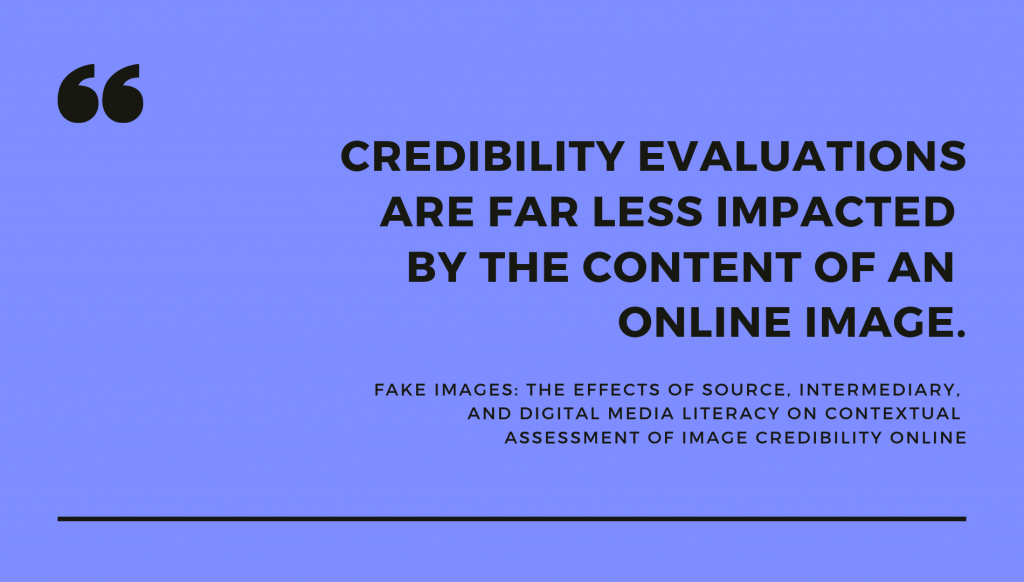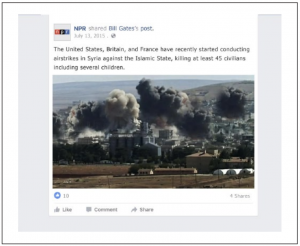Media literacy, photography skills — not content — matter most when IDing fake images

UC Davis study finds viewers’ digital literacy skills, social media use and digital imaging experience are “significant predictors of image credibility evaluation.”
Fake images: The effects of source, intermediary, and digital media literacy on contextual assessment of image credibility online
New Media & Society
By Cuihua Shen, Mona Kasra, Wenjing Pan, Grace Bassett, Yining Malloch and James O’Brien
Feb. 1

Study: “A Facebook post allegedly created by Bill Gates and shared by NPR. The image was modified to display airstrikes in Syria.”
A new study from UC Davis shows that people are better at identifying fake images than previous research suggested. Researchers manipulated photos by retouching, cropping and layering different images — and with different levels of manipulation sophistication. They then created 28 social media post mockups and tested source credibility, source and media type, intermediary and bandwagon. Participants evaluated the credibility of six fake images; they rated four images as fake or manipulated, researchers say. The other two images? Participants rated them just slightly above the midpoint of the seven-point scale.
The big finding: An image’s content — the news outlet posting it, for example — is far less impactful to determine credibility. Instead, the authors write, “The results were consistent across all six images tested, showing that viewers’ Internet skills, digital imaging experiences, social media use, and pro-issue attitude are significant predictors of image credibility evaluation.”
Study Details:
- Participants rated six images on a seven-point scale (from strongly disagree to strongly agree).
- Researchers also asked participants about their internet skills, digital imaging skills, Facebook/Twitter use and pro-issue attitude.
- Researchers recruited 3,476 participants from Amazon Mechanical Turk. The survey was hosted on Qualtrics.
- Participants were between 20 and 87 years old, and 90 percent reported having at least some college education or above.
Stay sharp with fake images using our list of 9 tools to identify fake images and videos.
